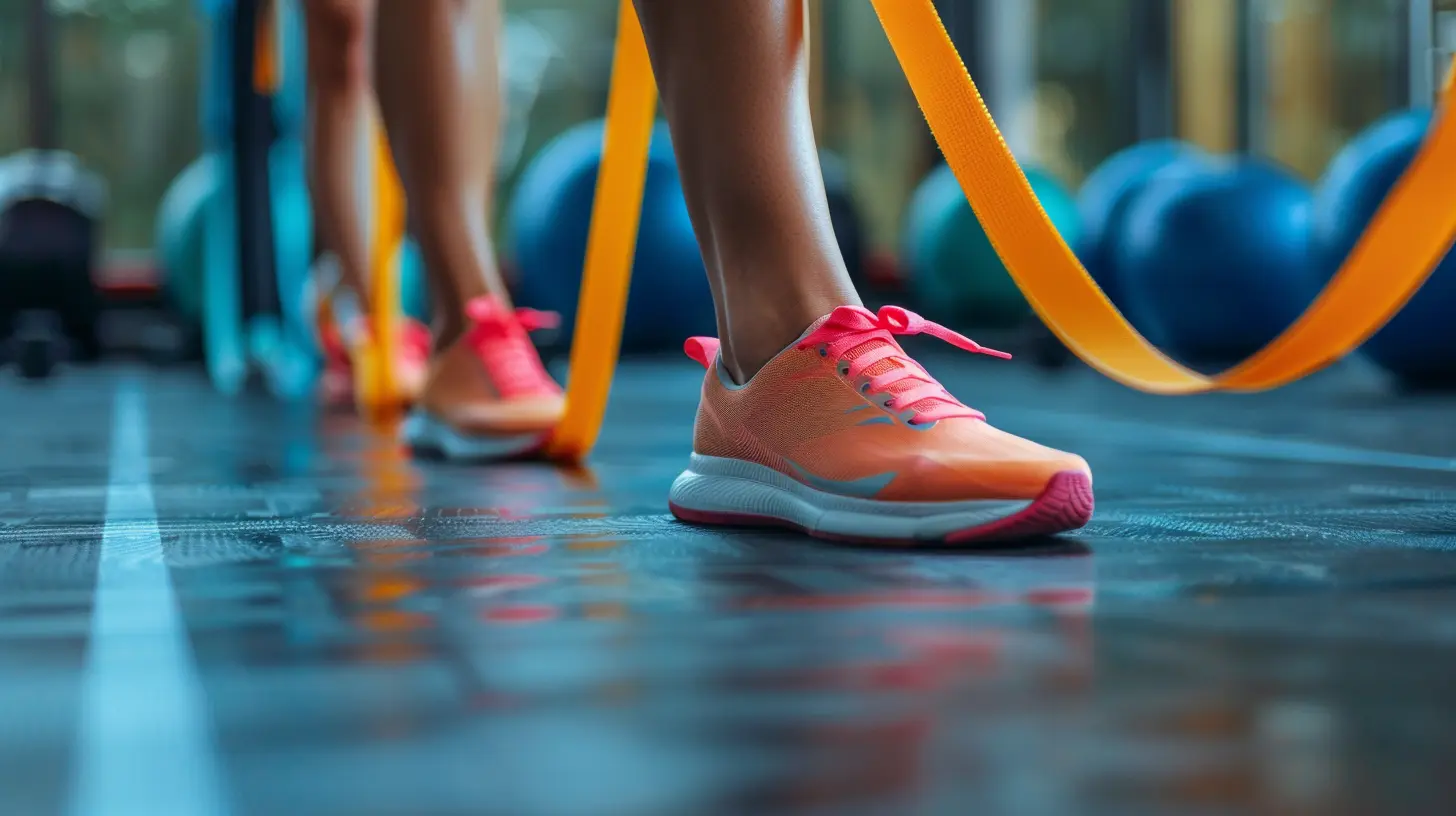Understanding the Strengthening Benefits of Resistance Bands
2 October 2025
Ever feel like gym workouts are just too much hassle? Or maybe you're looking for an easy way to stay fit without investing in bulky weights? Well, resistance bands might just be the unsung hero of strength training. They’re affordable, portable, and surprisingly effective. But how exactly do they help build strength? Let’s break it down!

What Are Resistance Bands?
Resistance bands are stretchy, elastic bands designed to add resistance to your workouts. They come in different levels of tension, from light to extra heavy, allowing users of all fitness levels to benefit. Originally used for physical therapy, these bands have grown in popularity as a full-body strengthening tool.Unlike dumbbells or barbells that rely on gravity, resistance bands create constant tension throughout your movement. This engages more muscle fibers and enhances muscle endurance, stability, and strength. Pretty cool, right?

Why Are Resistance Bands So Effective for Strength Training?
1. Constant Tension for Muscle Engagement
One of the biggest advantages of resistance bands is their ability to provide constant tension. When lifting a dumbbell, you may notice that some parts of the movement feel easier. With bands, however, your muscles stay engaged through the entire range of motion. This helps in activating stabilizing muscles and improving strength more efficiently.2. Versatility: Work Every Muscle Group
Forget the idea that you can only work out certain muscles. Resistance bands can target every major muscle group—legs, arms, back, chest, and even core. Whether you're doing squats, bicep curls, or shoulder presses, these bands ensure you get a full-body workout.3. Joint-Friendly Strength Training
Lifting heavy weights can put a lot of stress on your joints, especially if your form isn't perfect. Resistance bands, on the other hand, offer a more controlled way to build strength without putting unnecessary strain on your body. This makes them an excellent choice for those recovering from injuries or dealing with joint pain.4. Enhancing Flexibility and Mobility
Ever struggled with stiffness or lack of flexibility? Resistance bands can double as stretching tools. They help you achieve a greater range of motion and improve flexibility while strengthening muscles. This is why athletes and physical therapists often recommend using them for dynamic warm-ups and rehabilitation exercises.5. Great for Progressive Overload
If you’ve ever hit a plateau in your strength training, you know how frustrating it can be. One way to keep progressing is by increasing resistance. Resistance bands allow you to gradually increase tension as you get stronger, preventing strength plateaus and keeping your workouts challenging.6. Improves Stability and Coordination
Since resistance bands don't rely on gravity, your body has to work harder to maintain balance and control. This helps improve coordination, core stability, and overall movement efficiency—qualities that carry over into daily activities and sports performance.
How Resistance Bands Strengthen Different Muscle Groups
🏋️♀️ Upper Body Strength
Resistance bands can mimic many traditional weightlifting exercises such as:- Bicep curls – Strengthens the front of your arms.
- Tricep extensions – Helps tone the back of the arms.
- Shoulder presses – Builds strong, defined shoulders.
- Lat pulldowns – Engages the back and improves posture.
🦵 Lower Body Strength
Building lower body strength with bands is super effective:- Squats with bands – Builds strength in quads, hamstrings, and glutes.
- Lateral band walks – Activates the hips and glute muscles.
- Leg presses – Strengthens the thighs without using heavy weights.
- Glute bridges with a band – Targets the glutes for a firmer backside.
🏃♂️ Core and Stability Work
A strong core is essential for good posture and balance:- Seated Russian twists with a band – Engages obliques.
- Standing anti-rotation presses – Improves core stability.
- Plank band pull-throughs – Challenges core endurance.

Resistance Bands vs. Traditional Weights: Which Is Better?
💪 Portability and Convenience
Dumbbells and barbells require a dedicated space, but resistance bands can go anywhere with you. Whether you're traveling, working out at home, or in the park, bands fit in your bag and can be used in any small space.🏋️♂️ Muscle Activation
Studies show that resistance bands can activate muscles just as effectively as free weights. Since they create continuous tension, they engage stabilizer muscles better than traditional weights.🛡️ Lower Risk of Injury
Heavy weights can cause strain if not lifted with proper form. Bands, however, are more forgiving while still challenging your muscles. Their controlled motion reduces risk, making them an excellent option for beginners and those recovering from injuries.💰 Cost-Effectiveness
A full set of weights can be expensive, but a good set of resistance bands costs a fraction of that. If you're looking for an affordable way to build strength, bands are a worthwhile investment.Tips for Maximizing Strength Gains with Resistance Bands
1. Control Your Movements – Avoid rushing through reps. Slow, controlled movements ensure maximum muscle engagement.2. Increase Resistance Gradually – Move up to heavier bands as you get stronger to keep challenging your muscles.
3. Anchor Bands Properly – Ensure resistance bands are secured, especially when hooking them to doors or sturdy objects.
4. Combine with Bodyweight Exercises – Use bands with squats, push-ups, lunges, and planks for a more challenging workout.
5. Train Consistently – Just like with any workout, consistency is key. Aim for 3–4 sessions per week for noticeable results.
Final Thoughts
Resistance bands aren’t just a fitness trend—they’re a practical, effective way to build strength, improve mobility, and boost overall fitness. Whether you're a beginner or a seasoned athlete, these simple yet powerful tools can take your workouts to the next level.So, why not grab a set of resistance bands and start strengthening your muscles today? Your body (and wallet) will thank you!
all images in this post were generated using AI tools
Category:
ExerciseAuthor:

Angelo McGillivray
Discussion
rate this article
1 comments
Naya Stevens
Great article! Resistance bands are an excellent tool for building strength and improving flexibility. They’re versatile and can be used for various exercises at home or in the gym. Incorporating them into your routine can enhance muscle engagement and prevent injury. Keep up the good work!
October 6, 2025 at 5:04 AM

Angelo McGillivray
Thank you for your kind words! I'm glad you found the article helpful and agree on the benefits of resistance bands. Happy lifting!


